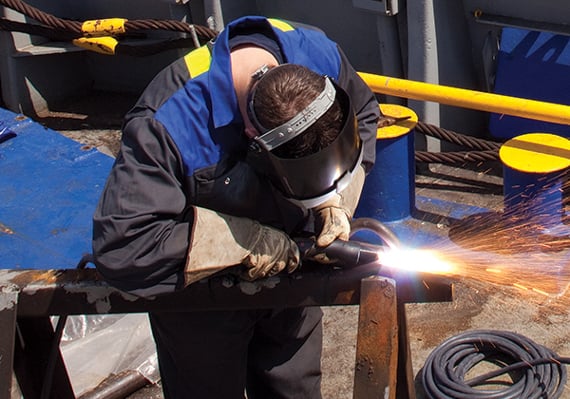Gouging gets molds quicker back into production
Steel service center
“One of the advantages of the Powermax45 XP is its efficiency...It gets the molds quicker back into production and makes it easier for me to gouge...” – Nordland Betong

Similar to plasma cutting, plasma gouging removes metal using a plasma arc between the torch and the workpiece. Surface metal is melted, and a gas jet blows away the molten metal from the workpiece without piercing or severing it. However, in gouging, specially designed consumables produce a somewhat wider arc, the torch is held at an angle, and only some of the material is blown away.
Many plasma systems have a dedicated operation mode for gouging that adjusts the amount of pressure traveling to the torch. You can still gouge with the system set to cutting mode, but it’s advisable to use gouging-specific shields and nozzles to avoid accidentally cutting through the workpiece.
One major advantage of plasma gouging over oxyfuel or carbon-arc methods, is that plasma works on any conductive metal, including mild steel, stainless steel, aluminum, and copper. With a bit of practice, it is possible to achieve smooth, clean, consistent gouges. In addition, plasma gouging can reduce the amount of noise and debris in the work environment over carbon-arc gouging.
Gouging can be performed freehand or with a mechanical aid such as a track cutter. It can also be done on fully-automated CNC cutting tables.
Works on any conductive ferrous or non-ferrous metal.
Faster operating speeds and less time spent on primary or secondary grinding work.
Reduction in noise and debris levels to meet regulatory and workplace safety requirements.
Absence of carbon contaminates to meet workpiece contamination requirements.
Improved safety over oxyfuel and carbon-arc methods.
Reduced operator training time and shorter learning curve for operation.
Efficient spot weld removal on automotive body panels made of high strength steel.

For Powermax® systems there are different gouging consumable options to choose from based on desired gouging results and operator preference.